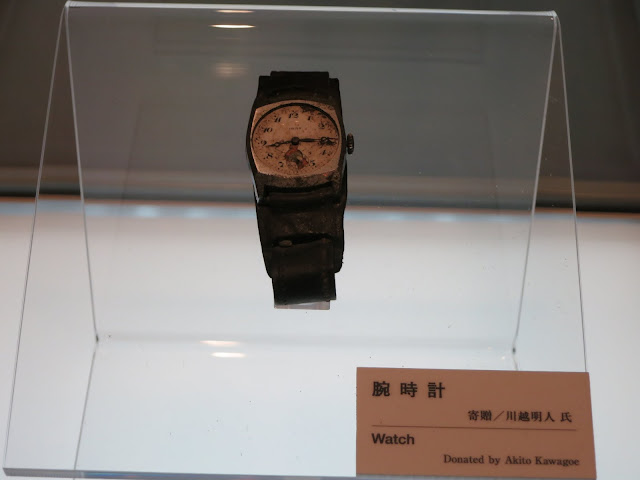Back in Middle School, I was really into origami. I could fold all the classics by
memory. Ball, boat, lily, frog, and of course, crane.
Still can, actually. It was about that time when I read this book about Sadako Sasaki. Sadako was a 12 year
old Japanese girl who... well, I'll just leave this here:
The Children’s Peace Monument would serve to remind visitors that nuclear weapons do not discriminate. I read this book over 25 years ago. I never thought that one day I’d one day stand in front of this memorial with tears in my eyes.
We weren’t even planning on
visiting Hiroshima on this trip.
I thought it was too far out of the way just to see a park and a museum.
But after we blew through the sites of the mountain town of
Takayama in an afternoon, it left us with an open day which allowed us
enough time to take the bullet train down to Hiroshima to stay a night
and visit the Peace Park.
We went in the morning
on a beautiful sunny day. Our hostel was close enough to walk to the
park, which we did. The first thing you notice upon entering the
grounds are the many groups of middle school aged
students who are there on field trip. Everywhere, small groups of
10-20 students gather around significant sites while a guide gave the
lesson.
Many of the guides were older. I knew that bomb survivors
volunteer to talk about their experiences with visitors,
but I wasn’t sure if they were the ones talking to the kids. It sure
seemed like it. I got the feeling that most school children in Japan
make their way to Hiroshima at some point. I can’t think of a better
way to learn about that terrible day.
The park itself is aligned along an axis, with the Atomic Bomb Dome at one end, and the Peace
Memorial Museum at the other. The Atomic Bomb Dome is the only remaining
structure still standing from
the day of the bombing. It is located almost directly under the epicenter of the blast. The city was actually going to tear it down during
the reconstruction, but thanks to generous donors, the site was
preserved.
The museum is set up in such a way that there’s
only one way to go through it. You move from exhibit to exhibit, which
takes you on a complete tour of the history of Hiroshima. We see the
city’s early years and its growth as a military
complex during WW2. We learned about the decision making process of
the United States, and how they selected Hiroshima as a target. The
U.S. needed a city that had not yet been bombed so that they could have a
clean reference point from which to measure
the effectiveness of the bomb. We then move on to the heavy hitting
exhibits describing the day of the bombing and its immediate aftermath.
The flash was so hot it burned black characters off of white paper.
Dark kimono patterns
seared into skin. Sand turned to glass. Human shadows
were exposed onto concrete film. Finally, we are shown the effects of radiation poisoning.
It was in this section where visitors could
actually see some of Sadako’s tiny delicate origami cranes on
display.
They were so small that she had to use a needle to fold them.
It was a somber tour, with more than a few sniffles and teary eyes among the visitors.
In case you were wondering whether or not the museum glossed over Japan's role in the war, I felt that the exhibits and the descriptions were honest. This comes from a Chinese whose family played a direct role in fighting the Japanese during the war. That's all I'll say about that. To this day, the mayor of Hiroshima will write a letter of protest any time a nuclear weapon is detonated anywhere in the world. You can see all of these letters in the museum.
When we left the museum, we walked through the rest of the Peace Park.
We rang the giant Peace Bell.
We paid our respects at the cenotaph, which contained the names of all the bomb victims.
You can see the A-Bomb dome through it.
These students were delivering a large bundle
of paper cranes to be displayed at the Memorial along with thousands
and thousands of other cranes folded and donated by children from Japan
and all over the world
every day. You can see one of the girls above holding the large string of cranes.

The class stood in front of the Memorial and sang a
song. I didn’t understand any of the words, but I really didn’t need
to. Neither, apparently, did many of the other tourists there, who were
tearing up right along with me.
After the song, one of the girls was led to a display case by a park official, where she hung up the cranes folded by her class. This might sound strange, but I felt honored to witness this.





















No comments:
Post a Comment